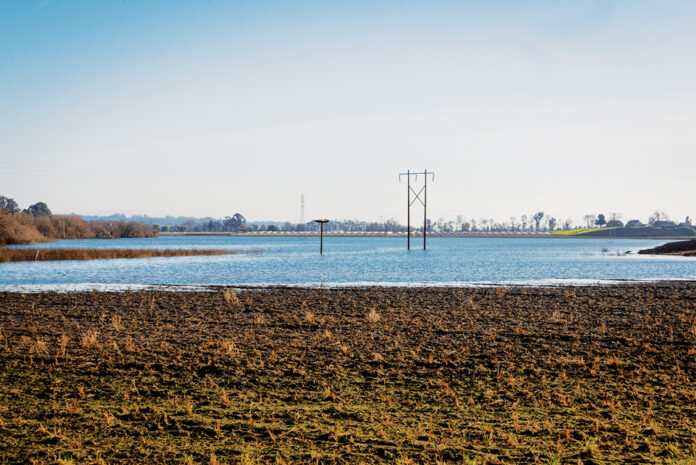SOUTH COUNTY—The first rainstorms of winter brought more than just moisture. With them came a chance to raise local water levels in alarmingly low aquifers and reservoirs. They also allowed water agencies across the county to put new sustainability projects—like injecting stormwater into underground aquifers—to the test.
“At least we know that it does rain in California,” joked Brian Lockwood, the general manager of the Pajaro Valley Water Management Agency (PV Water). But the drought isn’t over yet … I think that it’s easy to get a couple of big rainstorms and think we’re out of the woods, but the truth is we’re not.”
PV Water, however, did indeed make recent progress on various sustainable water management programs thanks in part to the wet weather.
The rains provided an opportunity to divert fresh water from Harkins Slough to the San Andreas Terrace for the first time in almost two years.
Lockwood says 2020 was a record diversion year, but in 2021 the slough water was so low and briny that the agency could not divert at all. This year, the water quality is good. But without more rain, the agency will need to turn the pumps off again. He says it works “like a savings account for water.” And after a dry, sunny January, the Pajaro Valley is already tapping into those savings.
“The recovery wells are already on, working to extract the water to put into our pipeline,” Lockwood said.
The agency delivers supplemental water to growers in the area to avoid drawing more water from the critically over-drafted Pajaro Valley Basin.
They’re also increasing storage options in the area. Each year, the naturally occurring College Lake in Watsonville gets drained and farmed. Most of the drained water ends up flowing to Monterey Bay.
The College Lake Integrated Resources Management Project will increase the capacity of the lake and make the water available for agricultural irrigation. It includes the construction of a treatment plant and six miles of pipeline.
On Dec. 7, the State Water Resources Control Board approved the water right permit for the project.
“That had been pending for almost four years and was a major achievement,” Lockwood said.
In another recent win for PV Water, the board of directors made the novel Groundwater Recharge Net Metering program permanent in September.
The program helps landowners create and maintain sites where excess runoff can percolate back into the ground. Participants then receive a rebate based on how much water their site collected.
It operated as a pilot program for the past five years. It was set to end automatically unless the agency’s board of directors voted to keep it. In September, the board decided to remove the word pilot and make it an ongoing program. It currently includes three operating suites, and organizers are planning others.
Andrew Fisher, a UCSC professor and partner with the agency on the project, hopes the net metering program will work for years to come in the Pajaro Valley. He also wants to adapt it to fit other areas. Fisher is currently working with the Santa Clara Valley Water District to implement a similar program there.
Individual districts must determine what strategies work best for their communities, but Fisher notes one common theme in his work across agencies: “I see a lot of busy people trying to innovate and get as much done as they can. Arguably the most important public health advance of the 20th century is the widespread availability of healthy, clean water. And a lot has to go on for that to be possible.”










